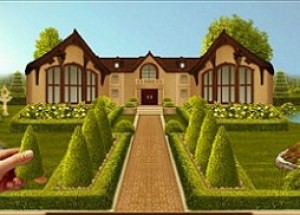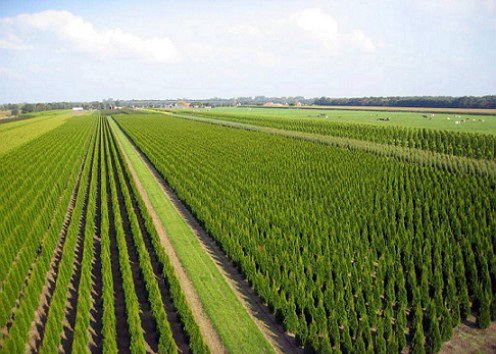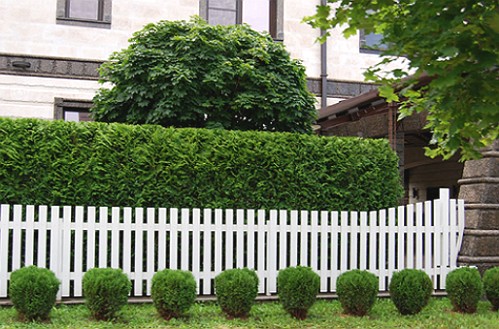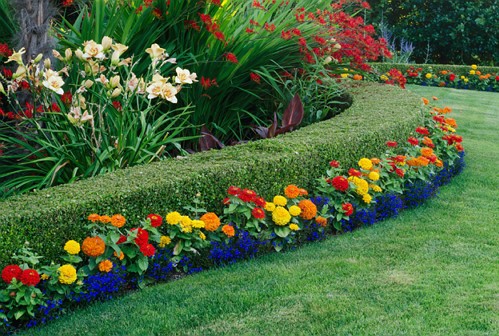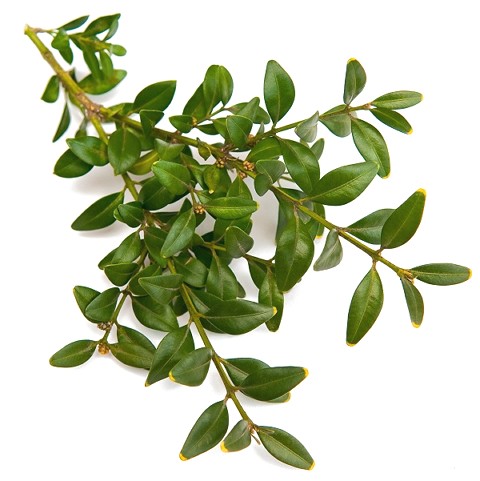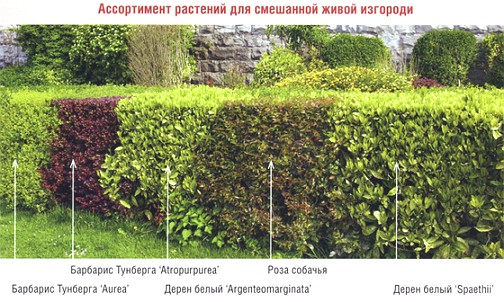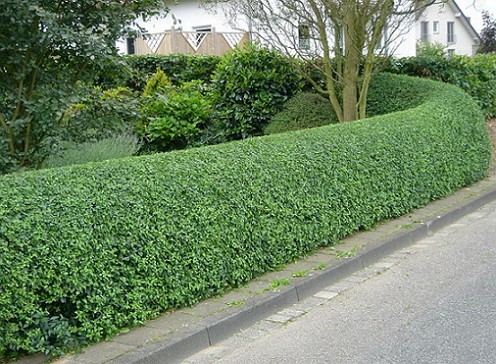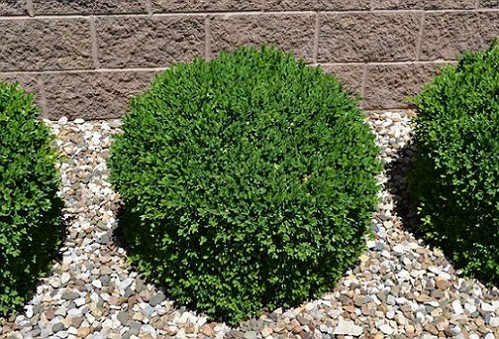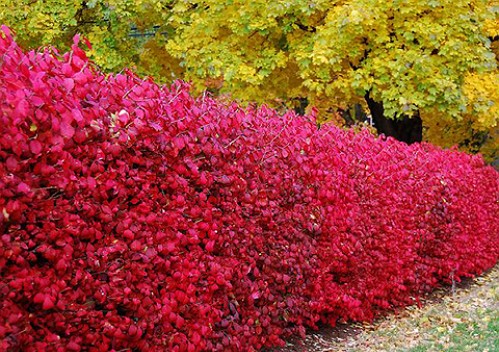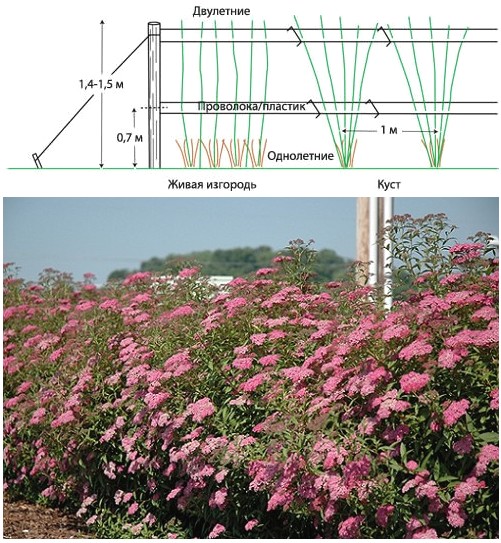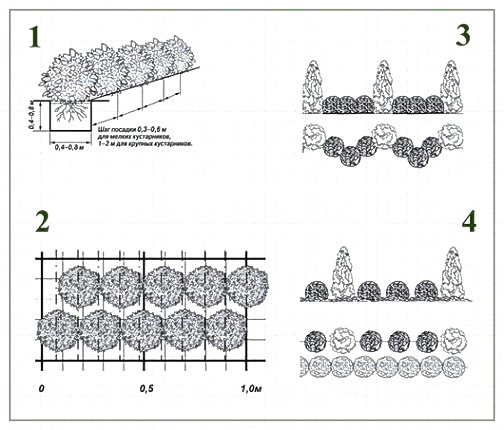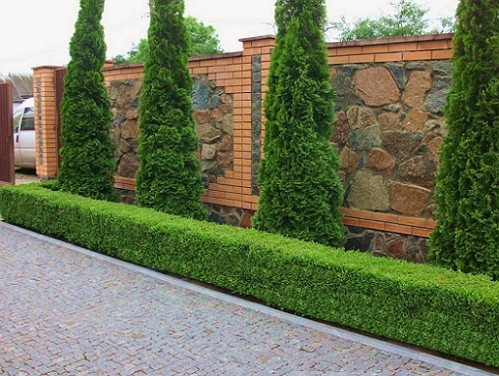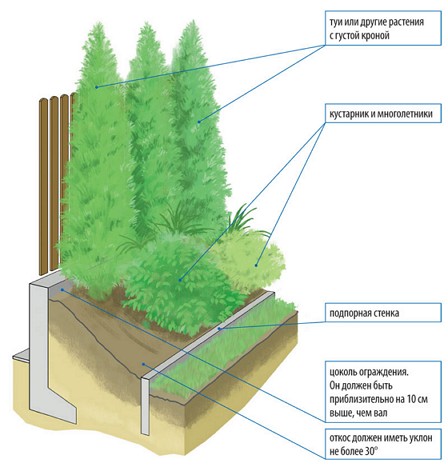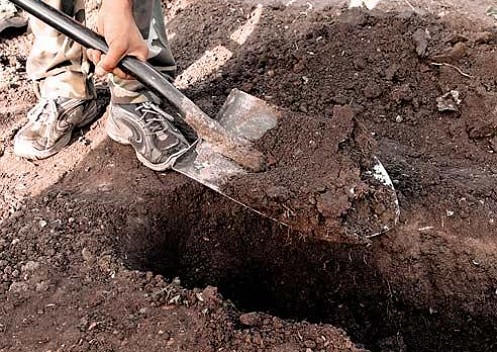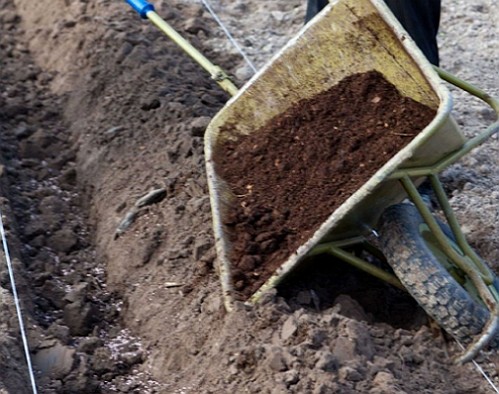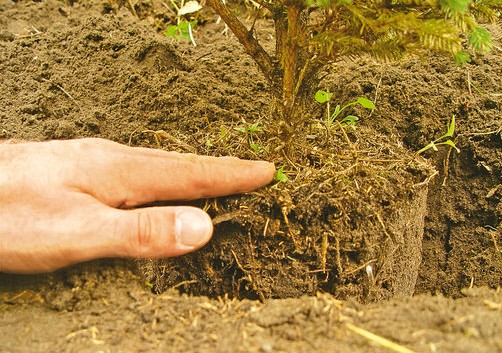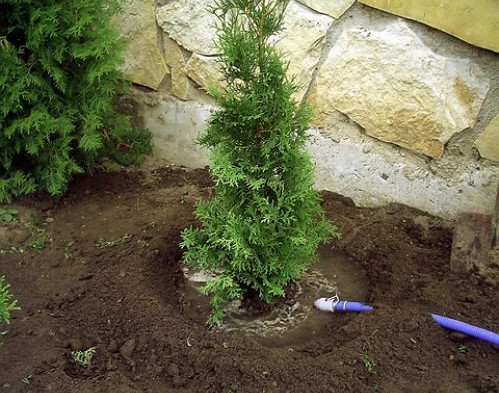Do not notice at the dacha a hedge, which once served as an elite decoration of the palaces of the medieval nobility, is simply impossible. The energy of the juicy greenery of the fence, with the moisture of summer rains, calls for active action. I want to plant and grow something like that.
Content
But each instance of a hedge has a certain degree of finickyness and requires an individual approach. Therefore, it will not hurt to study the growing conditions, pick up the best specimens from the nursery and determine the planting pattern.
What attracts a hedge
It is noticed that no artificial man-made fences will not replace the beauty of fresh greenery of hedges in the country. Objects of a live fence, representing planting trees or shrubs of a linear orientation, tightly closed crowns form the walls of the leaves.
The main purpose of planting hedges is to protect the site and its zoning. The height of the fence or the fence can be from 40 cm and reach 7 m. In order for the hedge to have the necessary density of the cover, it is recommended that the plants and the planting scheme are properly selected. Naturally, a long perennial blossoming fence is distinguished by the duration of decorative flowering.
Extend the period of decorative molding (sheared) or unshaped hedge allow evergreens for hedges.
We select plants by type of hedge
According to its configuration, the fence made of trees or shrubs can be straight or winding, one- or multi-tiered, according to the composition of plants evergreen or deciduous. Let's tell, for any type of a hedge or a live fence there are certain grades of the plants intended for a hairstyle and freely growing.
sheared - bob or quads
By unanimous recognition of experts, the most attractive plants suitable for hedges and having the ability to keep shape after cutting are perennial boxwood and thujas, as well as a cotoneaster, a hawthorn and a hawthorn.
The hedge trimmed will not always be "thoroughbred", it is possible to mix several shrub and tree species, combined according to the planting pattern and biological data.
The traditional living materials of hedges are a cotoneaster, hawthorn and an ambulance, which after a haircut create a dense wall of their dark green leaves. Correctly calculated cross-section of the fence or curb, the selected pruner for a hairstyle will provide hedges with comfortable conditions.
Helpful Tips
The most attractive hedges are created from shade-tolerant trees and shrubs, the fence of which is poorly lit by the sun. Wood species should be able to catch the necessary lighting, while maintaining a full-fledged sheet cover. For this perfectly suited boxwood, thai hedge and cottages.
To create molding hedges, the distance between adjacent seedlings reaches 1 m, between rows to 80 cm. When planted in several rows, the shredded shrubs are staggered.
free-growing is the sweet word of freedom
For free-growing hedges, it is preferable to choose well-lit places. Trees and shrubs are chosen with a branching crown, which is formed in the first years without a haircut.
To create such hedges use: chubushnik, barberry, spirea and juniper. We will not hide that the more free growing fence is more complex. To make the necessary configuration of the fence and taking a square, trapezoidal or oval shape it is necessary to use the appropriate kind of secateurs.
Helpful Tips
Limit freedom to the growing branches of tall shrubs, beautifully flowering from July to September, not worth it. Free-growing hedges of large-leaved hydrangeas, Japanese spirea or fragrant chubushnik do not require tiring care or regular haircuts. Fence from free-growing is formed by simple linear schemes, but the wealth of continuous flowering is the best recommendation of a hedgerough for a long time, which is best done in the spring.
We choose the landing scheme
Fencing patterns are manifold. Shrubs and trees are placed: in linear rows, in separate groups and bouquets, rank-and-file in height and in staggered order. We will show that preference is given to the trapezoidal form of trees planted according to a certain scheme.
multi-tiered
There are many schemes for planting fences that provide one- or multi-tiers. For a linear single-tiered fence, the selection is oriented to trees and shrubs with growing branches from the stem base. For a multi-tiered scheme, trees and shrubs are chosen that do not cover or overlap the green array of the adjacent layer.
For example, the classical scheme "boxwood" - "tuya", where the tier of a sheared boxwood 50-60 cm high does not cover the tuya tier up to 3 m.
In the 1-2 years after planting, tuja is cut only by lateral shoots. When the ¾ of the height is reached, the thuja begins to cut the tip.
In this case, the living evergreen fence is combined in height, shape and color, retains beautiful external outlines.
They support the heyday of the hedge: white or red turf, Amur barberry, smooth york, aronia and lilac.
The scheme of planting is chosen, taking into account the possibility of growth of a bush or tree.
Types of pruners for cutting hedges
The main tool for cutting a hedge is a pruner. Undoubtedly, the best types of pruners for cutting hedges are distinguished by a one-handed design with a 30 mm cutoff, equipped with a ratchet mechanism with a spring return and locking blades. For the cutting of tall trees, a two-handed high-cutter is selected.
Stages of planting and hedging, step by step
Warn that planting a hedge is a time-consuming exercise, and leaving as you grow and bloom is a long one. In addition, there are certain rules for laying down planting material, developed by experts of nurseries and landscape design for decades. We will suggest that it is preferable to purchase seedlings of trees 3-5 years old in nurseries and plant with an earthen lump. Planting of the hedges at the rate of 3-4 saplings per p.m. begin with the creation of a trench.
Formation of a planting trench
Step 1. At a certain place and on the marking of the territory according to the scheme of planting we excavate a trench larger than the volume of an earthen coma with a seedling.
Step 2. We put out the composted soil.
Accommodation of seedlings
Step 3. We place the seedling strictly vertically and centrally, taking into account the height of the trench.
Filling the trench with earth mix
Step 4. After the placement of the seedlings, the trench is filled with earth mix with top dressing of hedges and the soil is crushed over the poured soil.
Trimming
Step 5. The seedlings are cut at the same height, the lateral shoots of each seedling are cut to ½ the length. Foreign plant residues are removed.
Watering
Step 6. Planted plant watered using a watering hose until the soil is deeply moistened.
Mulching
Step 7. The top layer of soil is mulched with bark of trees, peat and humus.
How to personally arrange a hedge, will show the video.


